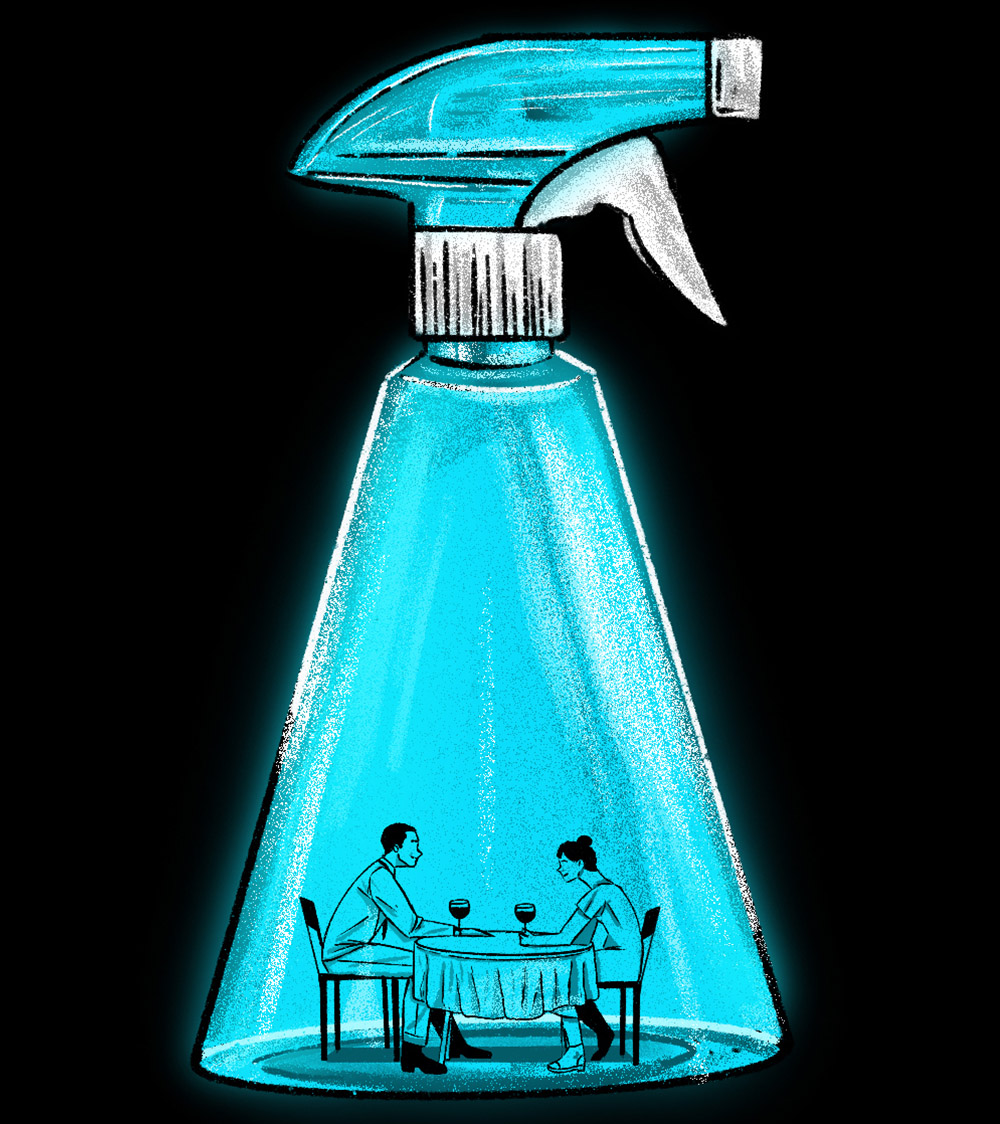
After more than two months on hiatus, Washington, DC’s Sauf Haus Bier Hall and Garten reopened for rooftop dining on May 29. Before customers could sit down to taste the pub’s oversized pretzels and slurp down steins, they were given the option to pass through its new Cleanse Portal—a white entry gate emitting UVC light meant to zap any remnants of the coronavirus on their bodies and in the air around them. The portal is made by Healthe, a “lighting science” company that markets its Cleanse line as a chemical-free way to sanitize air and surfaces in busy environments. “Because let’s face it,” Healthe’s website states, “sharing isn’t always caring.”
Not to be confused with the UVA and UVB rays that reach us through sunlight, ultraviolet-C light inactivates bacteria and viruses by damaging their DNA and RNA. In the 1930s, scientist William Wells discovered that UVC rays could neutralize infectious disease particles suspended in airborne droplets, and he later used the method to prevent the spread of measles in Philadelphia classrooms. UVC cleaning lamps now sanitize subway cars and hospital rooms, and as the worst shortages of masks and gloves took hold in the spring, health care workers across the country used it to sterilize N95 masks.
But until recently, shortwave UVC light was not beamed directly on humans because the high-energy rays can irritate eyes and skin. That started to change when scientists suggested that rays from a sliver of the UVC region of the spectrum—from around 200 to 222 nanometers, known as far-UVC—hurt germs but are too short to penetrate skin cells and corneas. (That said, UVC light should never be “brought inside the body,” as President Trump infamously suggested in April.)
In experiments with hairless mice, led by David Brenner, director of Columbia University’s Center for Radiological Research, far-UVC light waves couldn’t penetrate the dead cells sitting on the outer layer of skin, or the film on the surface of the eye—meaning the light couldn’t do harm to living cells—but it killed influenza and MRSA. Now Brenner is researching its effects on the coronavirus. “What we’ve seen so far is that it clearly can kill this virus,” he says. His initial studies found that far-UVC light continuously beamed for eight minutes kills 90 percent of airborne coronaviruses.
Yet the benefits of far-UVC are still being debated. Harvard School of Public Health professor Edward Nardell, an expert on airborne diseases, says his fellow members of the industry group Illuminating Engineering Society have been discussing the use of far-UVC “nonstop” since the start of the pandemic and think it’s safe. But without more long-term studies, some researchers, including James Malley—an ultraviolet expert at the University of New Hampshire and a founder of another industry group, called the International Ultraviolet Association—discourage the light’s use as a human sanitizer. A 2014 study by UK and US scientists suggested that it caused skin cancer precursors (though the scientists pointed out that UVC rays with longer wavelengths could have been responsible for the damage).
In the face of a voracious virus, several lighting companies are betting on far-UVC’s safety. Along with the $20,000 portal used at Sauf Haus as well as New York’s Magnolia Bakery, Healthe also offers the Downlight, which can provide “sanitizing and illumination” at home or in the office. The US subsidiary of Ushio, a Japanese lighting brand, announced a partnership with Acuity Brands on a line of ceiling and wall lamps to be released this year. Analysts predict that the market for UV disinfection equipment will grow by more than $2 billion over the next five years. The new products’ quality and effectiveness may vary, Nardell says: “It’s a little bit of a Wild West.”
And it’s unclear which government agency should regulate these contraptions. Healthe pulled the Cleanse Portal from its website for a period of time starting in June “to make some refinements,” says its founder Fred Maxik, and the company applied to the Food and Drug Administration for an emergency use application (though Maxik says restaurants can continue to use the portals).*
Those who think they’re passing through a portal of immunity on their way to grab a beer should know about the device’s limitations. “It’s very good for air, but it’s less good for surfaces,” Nardell says. Dirt and grime, not to mention the ridges and shadows of our pores, nails, and skin, get in the way. More importantly, a UV portal won’t prevent people from transmitting the virus by coughing, talking, and breathing once they’re inside the establishment. UVC is “never going to be the perfect technique, and absolutely you should not forget about wearing a mask and keeping your distance,” Brenner says. “We see this as a third weapon.”
*Update: Healthe was informed by the FDA that the Environmental Protection Agency is responsible for regulating non-medical pesticide devices such as germicidal UV light products. Healthe complies with EPA guidelines.
"light" - Google News
August 28, 2020 at 05:03PM
https://ift.tt/3gCsUl8
Can UV Light Slow the Spread of the Coronavirus? – Mother Jones - Mother Jones
"light" - Google News
https://ift.tt/2Wm8QLw
https://ift.tt/2Stbv5k
Bagikan Berita Ini














0 Response to "Can UV Light Slow the Spread of the Coronavirus? – Mother Jones - Mother Jones"
Post a Comment